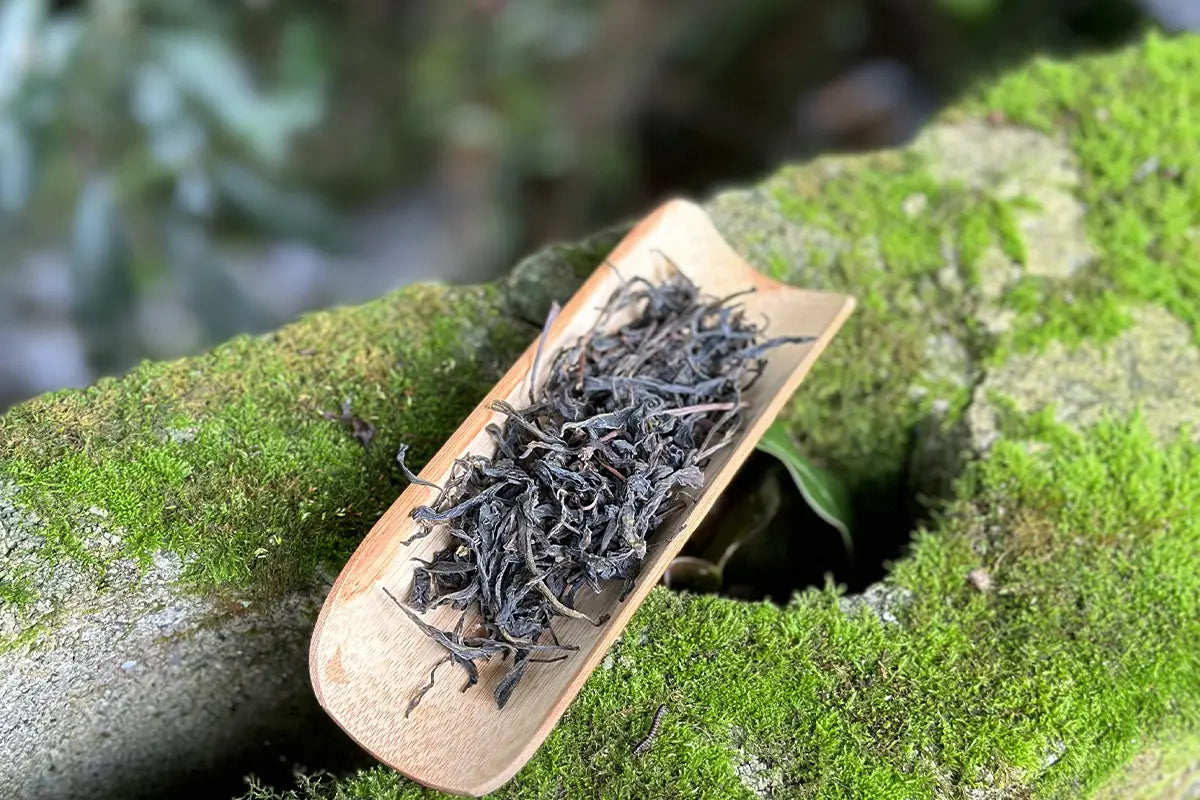По сравнению с чаем с китайских чайных плантаций китайский дикий чай является относительно узкоспециализированным, но он также завоевал большую любовь энтузиастов.
Китайский дикий чай относится к чаю, приготовленному из свежих листьев диких чайных деревьев. В зависимости от различных методов обработки дикий чай классифицируется на различные категории, такие как дикий листовой зеленый чай , дикий листовой черный чай, дикий листовой улун и дикий листовой темный чай.
Китайские дикие чайные деревья — это те, которые растут в естественной среде на открытом воздухе, где процесс их роста не затронут вмешательством человека. Эти деревья размножаются семенами, сосуществуют с дикой природой, участвуют в естественной конкуренции и демонстрируют сильную жизненную силу.
Что делает дикий чай особенным?
Китай уже производит большое количество высококачественного китайского чая с чайных плантаций, так почему же дикий чай привлек столько внимания? Это из-за некоторых уникальных аспектов дикого чая по сравнению с плантационным чаем.

- Разновидности полового размножения:
Чайные деревья на плантациях в основном размножаются черенками, что приводит к фиксированным генам и сортам. Дикие чайные деревья, с другой стороны, размножаются семенами, что приводит к генетической случайности. Кроме того, половым путем размножаемые дикие чайные деревья часто имеют более развитую корневую систему, что повышает их способность поглощать питательные вещества из почвы.
- Симбиоз с другой флорой и фауной:
Плантационные чайные деревья растут в искусственно управляемых средах с минимальным присутствием другой флоры и фауны. В отличие от них, дикие чайные деревья растут разбросанными в естественных условиях на открытом воздухе, сосуществуя с различными деревьями, кустарниками и дикими животными.
- Ограниченная доходность:
Площадь произрастания диких чайных деревьев намного меньше, чем чайных плантаций. Из-за отсутствия вмешательства человека дикие чайные деревья, которые десятилетиями растут в дикой природе, часто имеют небольшие размеры, а количество свежих листьев, доступных для сбора, минимально. Поэтому урожайность дикого чая намного ниже, чем у чая плантационного.
Дикие чайные деревья обычно процветают в благоприятных условиях произрастания
Некоторые китайские чаи считаются одними из лучших листовых чаев , и их популярность тесно связана с прекрасными условиями выращивания их чайных деревьев. Да Хун Пао , известный как один из лучших улунских чаев , является типичным примером. Опытные любители чая могут различить тонкие различия во вкусе.
Места, где растут дикие чайные деревья, часто удалены и недоступны для большинства людей, но обладают превосходными природными условиями. Обычно только местные жители, которые часто отправляются в горы, знают о распространении этих диких чайных деревьев. Согласно нашим наблюдениям, дикий чай в регионе часто собирают и потребляют местные жители в течение многих лет, прежде чем он распространится в небольших масштабах.
Качество дикого чая в одном и том же регионе также различается. Как правило, дикий чай, собранный в районах с лучшей природной средой в глубоких горах, на вкус лучше, чем собранный в близлежащих горах. Это результат многолетнего опыта местных сборщиков и производителей чая в сборе и обработке чая.

Безопаснее и здоровее
Большинство чайных плантаций выращивают с использованием удобрений и пестицидов для увеличения урожайности листьев и предотвращения повреждения вредителями.
Процесс роста диких чайных деревьев не тронут человеком, без использования пестицидов или удобрений. Поэтому, если вы хотите купить китайский органический листовой чай , вы можете поискать в разделе дикий чай. Дикий чай безопаснее, полезнее и отлично подходит для подарков в виде чайных наборов семье и друзьям.
Итак, все ли листовые чаи, маркированные как дикий чай, не содержат удобрений или пестицидов? Это не может быть подтверждено. Может иметь место загрязнение почвы или воды в местных диких районах или распыление пестицидов и удобрений на растительность вблизи диких чайных деревьев. Поэтому при покупке дикого чая важно понимать происхождение дикого чая и иметь ли соответствующие тесты и органические сертификаты.
Однако в целом вероятность содержания пестицидов и удобрений в диком чае гораздо ниже, чем в плантационном чае.
Каковы вкусовые характеристики дикого чая?
Дикие чаи из разных регионов имеют свои собственные уникальные вкусы. Если у вас есть возможность, изучение и дегустация их станет захватывающим опытом. Не стесняйтесь использовать дегустатор листового чая, чтобы исследовать различные вкусы чая.
Попробовав дикие чаи из разных мест, мы выявили некоторые общие черты их вкуса.
С одной стороны, чаи одного и того же типа, произведенные из диких чайных деревьев , такие как черный чай, как правило, имеют более насыщенный вкус и более яркий цвет.
С другой стороны, дикие чаи известны своим сильным ароматом. Будь то свежесорванные листья или заваренный чай, аромат отчетливый и бодрящий, когда держишь его в руке.











































































